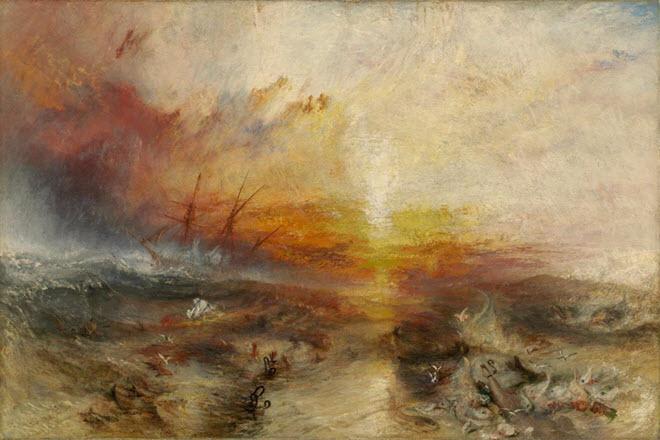“I Can’t Breathe”: International Responses to the BLM Movement

Credit: Black Lives Matter march by Victoria Pickering is licensed under CC BY-NC-ND 2.0
Resource Description
This module is intended for students interested in having a global perspective on the impact of George Floyd’s death and the Black Lives Matter (BLM) movement. Students will survey BLM in the U.S. context and its international iterations around the globe by addressing the complexity of race in relation to social justice, political oppression, and the role of the media and technology. Through the assigned materials, students will grasp the ways in which racism manifests across cultural contexts and local histories, with particular attention to the regions of Central Europe (Germany and France), East Asia (China, South Korea, and Japan) and Latin America and the Caribbean (Mexico, Colombia, Brazil, Haiti, and the Dominican Republic).
Learn moreAqueous Borders: Colonizing Water in the 21st Century
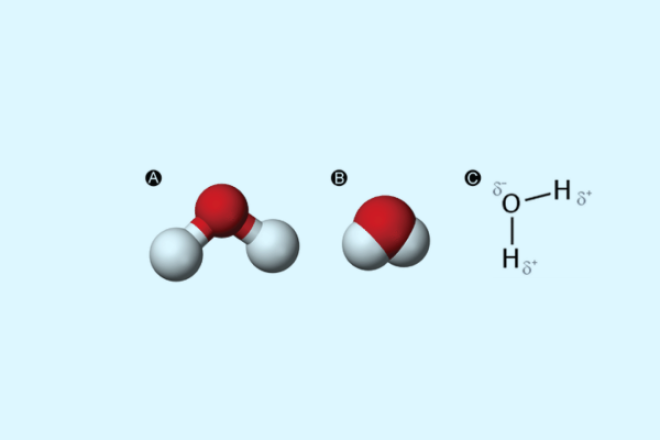
Image adapted from LibreTexts Chemistry, licensed under a CK-12 Curriculum Materials License
Resource Description
This three-part module provides lesson plans related to water pollution and water governance. Part I of this module examines water, pollution, and toxicity. Focusing on plastic pollution as a form of colonialism, this module argues for asserting that environmental responsibility needs to rest at the systemic level. Next, using the novel Agua by the Peruvian writer Jose Maria Arguedas, Part II examines the conflicting relationship between peasant-indigenous communities in the Andes and their fight for water sovereignty. Lastly, Part III reveals how water justice struggles are political projects against human rights. Using the complex situation at the U.S.- Mexico border, this module exposes the case of water rights for immigrants crossing the border.
Learn moreArtistic Responses to the Zong Massacre (1781)
Resource Description
Suitable for introductory or humanities survey courses, this module offers teaching resources for a unit on the 1781 Zong massacre. It focuses on artistic responses to the massacre and on how the massacre is a representative event of the Transatlantic Slave Trade. The module includes artworks and texts that could be used in the classroom, discussion questions and activities, and a culminating writing prompt. This module invites students to reflect on the gaps in the colonial archive and to think about the role of art and literature in shaping understandings of historical events. It also provides students with an opportunity to recognize how the dehumanizing logic of slavery shaped modernity and how black artists challenge its legacy through their work.
Learn moreChristopher Columbus: Commemoration and Controversy
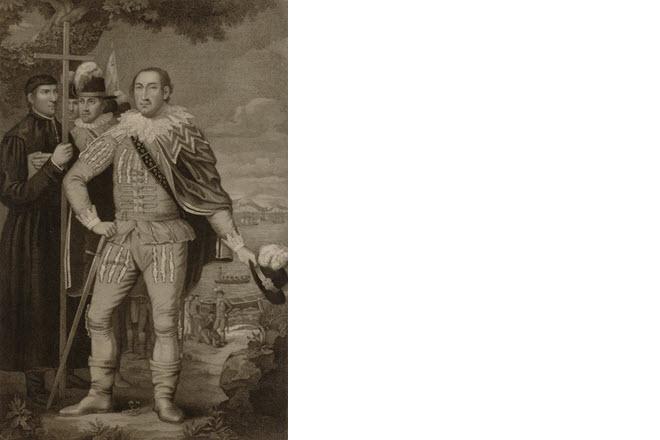
Credit: Landing of Christopher Columbus by David Edwin. Smithsonian American Art Museum, Gift of International Business Machines Corporation, is licensed under CC0.
Resource Description
This module enables students to reflect critically and in an historically informed way on how Christopher Columbus has come to signify both belonging and exclusion in the United States. The two-week module explores four discrete themes: colonization, focusing on the four voyages and their immediate consequences; the mythical female figure of Columbia in the U.S.; the creation and circulation of Columbus as an Italian American icon; and the recent protests and debates concerning statues and other commemorative images and rituals. The material includes essays by historians and folklorists, journalistic coverage, Columbus’ own writings, sample protest petitions, and examples from popular culture. These resources offer perspectives on the protest movements of 2020 that brought to fore fundamental questions about America itself.
Learn moreCo-Constructing a Class Lexicon: A Semester-Long Project
"Dictionary" by greeblie is licensed under CC BY 2.0
Resource Description
This lexicon is a semester-long examination into and expansion of course terms. There is an initial examination into multiplicities of knowledge, which takes place over two class days. Then, for the first half of the semester there are two “daily” assignments: At the end of every class period, students submit key words/phrases of that period to their instructor, and as part of homework, students submit three key words/phrases to their instructor—one of which they further describe. In the second half of the semester, students continue completing the first assignment but now homework asks that students expand upon one of the previously described words/phrases. At the conclusion of the semester, students work with the entire corpus of collected words/phrase—those submitted after class/as part of homework and those described/expanded—building word-clouds and discussing the word clouds’ implications.
Learn moreFast Fashion
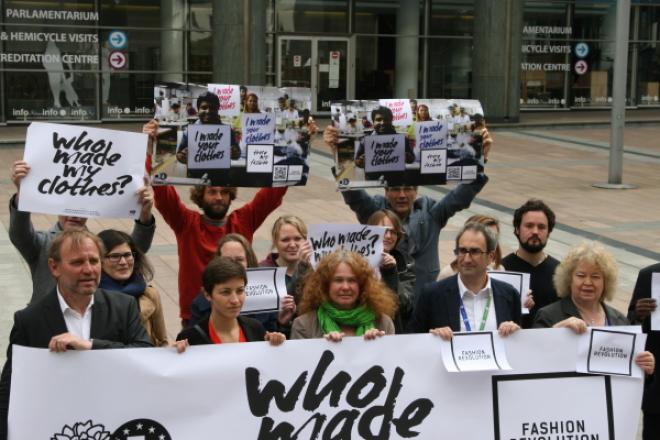
Rana Plaza Commemoration March by Greens/EFA Group is licensed under CC BY 2.0, via Wikimedia Commons
Resource Description
Who doesn’t want to be fashionable? Fast fashion is quickly becoming one of the world’s biggest problems. The fashion industry is creating more clothing than we can use, most of it of lower quality, and many of which ends up in landfills. Consumers buy this cheaply made clothing following fashion trends, but the garment breaks or we grow tired of it, and we donate it. What happens to the clothing we donate? It has been said that after oil, the fashion industry is globally the most polluting industry. This module explores the global impacts of fashion consumerism, the impact on local economies, and its effects on the environment.
Learn moreGold
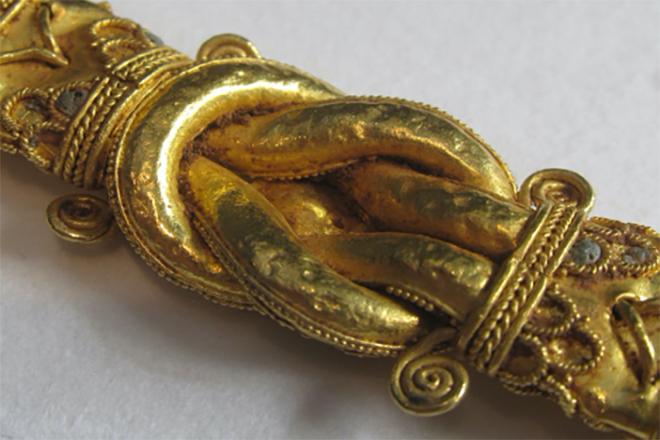
Credit: Heather C. McCune Bruhn, 2017, licensed under CC BY-NC-SA 4.0
Resource Description
In this two-part module, developed by Heather McCune Bruhn and Sarah J. Townsend, we will explore gold. First we’ll look at gold as a substance and examine how it is obtained from the earth (along with some of the dangers and consequences involved). Next we'll examine what makes gold so important: its allure and symbolism in Prehistory, as well as in the Ancient and Medieval world. Then we'll look at the importance of Africa as a source of gold throughout the centuries before exploring some ways of working gold. Part II of this module examines the extraction of gold in the Amazonian region of South America, focusing on its impact on the environment, indigenous people, and the miners themselves.
Learn moreLapis Lazuli
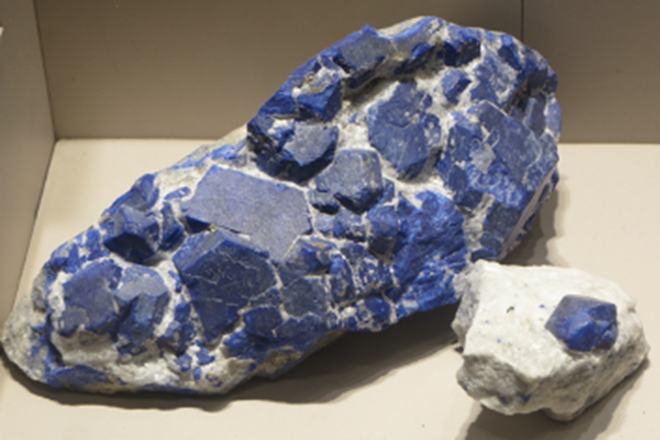
Credit: Lapis Lazuli by Heather McCune Bruhn, Penn State University, licensed under CC BY-NC-SA 4.0
Resource Description
Lapis lazuli is a bright blue semiprecious stone, first known only in remote mountains in Afghanistan and Pakistan, and more recently in Brazil. This module explores lapis lazuli's use first in the production of high status objects in the Ancient world (Ancient Near East, Rome, etc.) and then its use as an expensive blue paint pigment. Since the process for extracting ultramarine blue pigment from lapis lazuli is so long and labor intensive, true ultramarine is still one of the most expensive pigments in the world. You will be able to read about and watch videos detailing the ultramarine extraction process, as well as the production and use of some alternatives to ultramarine blue.
Learn moreModernism’s Monsters
Resource Description
The modern era is full of fears. The more we know about our world, the more frightening it can be, and the 1950s were a time in which the threat of nuclear war, fears of communist takeovers, and new advances in science were all combining to make the modern world a very frightening place. This fear was reflected in art and in popular culture, particularly in inexpensive B-movie science fiction films. This module explores some of that fear, and the artistic and popular works inspired by it. Watch out for the giant ants!
Learn moreModernity Unmoored: Ships as Material and Metaphor
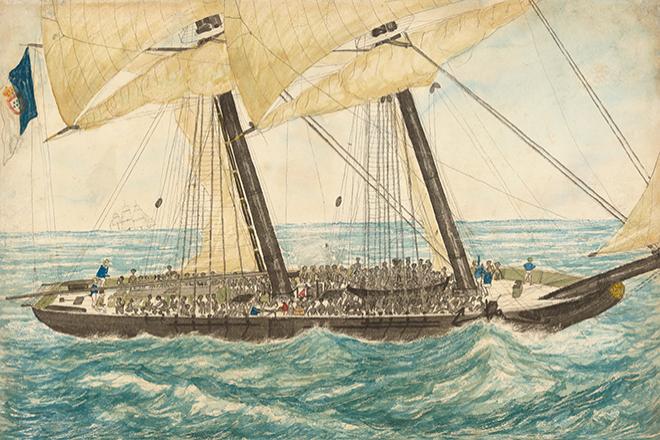
Credit: Lieutenant Henry Samuel Hawker, The Portuguese slaver Diligenté captured by H.M. Sloop Pearl with 600 slaves on board, taken in charge to Nassau, May 1838. Collection of the Smithsonian National Museum of African American History and Culture.
Resource Description
This series of modules approaches ‘ships’ and ‘boats’ as material and metaphor for thinking about migratory experiences and the movement of peoples, goods, and commodities, as they relate to the idea of modernity on a local, transnational, and planetary scale. The modules focus on literary, visual, and cinematic representations of ships and boats as a basis for engaging in comparative work. Ships and boats are considered not just as physical objects, but as technologies and symbolic objects that speak to the dynamics of circulation and/or extraction in the context of slavery, colonialism, and global capitalism. The modules underscore the role they have played in the establishment and subversion of racial, cultural, economic, and political divides across space and time.
Learn more
